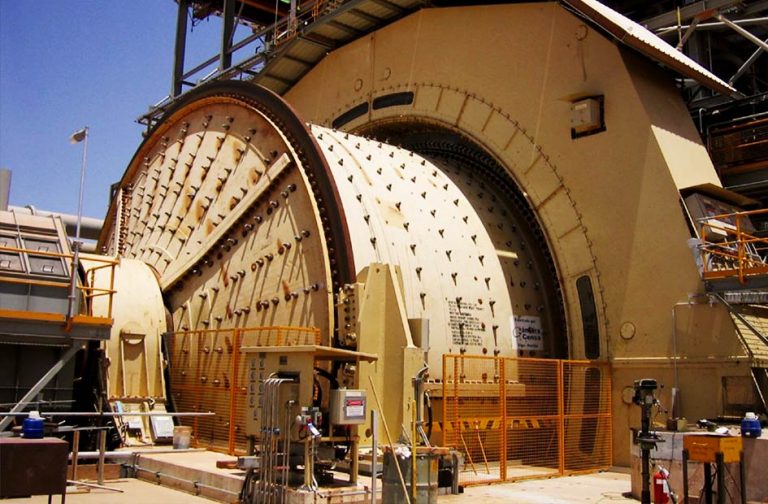Reduction of costs in ore processing goes through the increase of the economic benefit.

The Chamber of Mines of Peru, aware that metallurgical processes are one of the activities that represent a high cost for companies, it will develop a training on optimization of gold and silver ore processing plants, as well as the procedures that are carried out.
This is extremely important, especially in the current context of mining sector, as it is going through a period of crisis, which has a direct influence on development of mining projects, especially in terms of investment.
The training of the Chamber of Mines of Peru will be given as part of the «GeoMet International Mining Congress 2016». In fact, members of the Board of Directors and Advisory Council of our institution will be in charge of the development of specialized «Short Courses».
For example, Ph.D. Jose Luis Salazar Navarrete, Director of Metallurgy Projects of the Chamber of Mines of Peru, will speak on «Optimization of Gold and Silver Ore processing Plants».
Regarding the subject, a Chilean expert, pointed out that «the reduction of costs in the processing of gold and silver ores involves an increase in economic benefit, as well as an increase in quality of the products, energy use and stability regarding changes that may occur in the market at an international level».
One of the methods to optimize the performance of gold and silver concentration plants is through the implementation of simulation models; which allow control of production processes or design of new treatment methods, oriented to perform actions with the highest possible efficiency level and at a significantly lower cost.
Within processing plants, the size reduction of an ore represents an important operational cost, since it requires high energy consumption. Therefore, one of the most logical proposals in crushing would be that this procedure is carried out in a single stage; this would mean significant savings in terms of purchase and maintenance of machines.
However, the expected results in terms of quantity and quality of the fragmented material would not be obtained, which can be understood as inefficient work and would generate additional costs in the loading and transportation stage. For this reason, it is important to develop crushing in different stages (primary, secondary and tertiary).
In recent months there has been a steady decrease in precious metals price such as gold and silver; therefore, it is necessary to obtain the maximum possible yield during the treatment stage in order to achieve acceptable profitability. Specialized companies know that optimization of ore processing plants is essential; therefore, they have started to renew and improve design of products.
For example, Metso has developed the MP2500 cone crusher, one of the largest cone crushers in the world, which is operating in Zambia.
Among the advantages of this equipment is that it can process large volumes of ore; its capacity is double that of current MP 1250. It is also easy to work with large rocks, because its processing goes beyond that of traditional equipment and reduces energy consumption in later stages of process. In addition, due to the smaller amount of equipment installed in plant, less maintenance activity is generated.
Optimization in recovery of precious metals at a low operating cost requires application of methods that allow a better quality of the material obtained through a reasonable investment. Currently, electrowinning is one of the simplest procedures to recover gold and silver metals with a fairly high grade, which means that application of refining is much lower. This results in significant economic savings compared to other more traditional techniques such as zinc cementation.
Another aspect that must be improved is environmental management; since in obtaining processes of precious metals, toxic substances such as cyanide are often used, as it is one of the alternatives, from technical and economic point of view, for recovery of gold worldwide. However, the use of this element ends up becoming an inconvenience when concentrations exceed levels established in environmental regulations. Therefore, in order to control, reduce or destroy this substance, various existing techniques must be used. Among the most effective are oxidation, biooxidation and natural degradation methods, which reduce toxicity of cyanide compounds in the long term.
Among the favorable points of natural degradation, we can mention that treated effluents usually have more suitable physical-chemical characteristics and higher quality to be disposed of in a direct discharge, compared to others that have been treated with some chemical substance. This method eliminates about 92% of the total cyanide in an effluent. In addition, approximately 99% of this substance has been possible to eliminate in weak metal complexes after application, as well as more than 95% of copper and other toxic metals. These figures show that this biological process is highly competitive with methods using chemical oxidizing agents.
From an economic point of view, cost is quite low compared to other processes, the treatment time is shorter and degradation of pollutant is more complete. Finally, end products of biodegradation are ammonia, carbon dioxide and water, which are environmentally acceptable.
Scientific advances and research are constant and indispensable elements to optimize achievement of results. For example in March 2015, as part of the research line of Membrane Separation Processes Laboratory of a renowned university of Chile, scientists conducted a study to minimize risks of state changes of cyanide through a membrane adsorption process. The Journal of Membrane Science published it under the title «Design and cost estimation of a gas-filled membrane adsorption process as an alternative for cyanide recovering in gold mining». The study was developed from systems that simulated the same composition of gold deposit waters. This ended up increasing its feasibility of application in a real site.
This vitally important topic will be presented by Ph.D. Jose Luis Salazar Navarrete, who works as Metallurgy Project Director at the Chamber of Mines of Peru and has 25 years of professional experience. His outstanding career includes work in several Latin American countries, such as Chile, Bolivia, Mexico, Argentina and Peru.